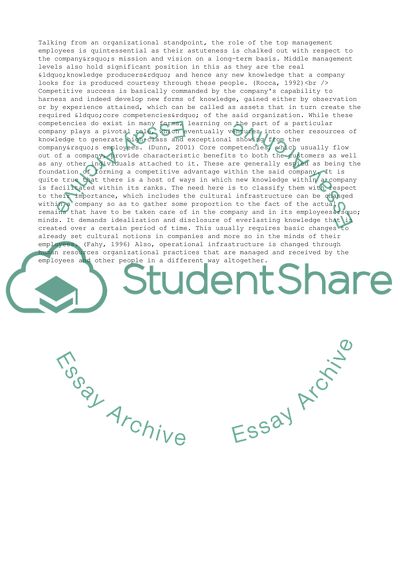Cite this document
(The Value of Knowledge as a Competitive Weapon to Modern Organizations Coursework, n.d.)
The Value of Knowledge as a Competitive Weapon to Modern Organizations Coursework. Retrieved from https://studentshare.org/management/1547407-determine-the-value-of-knowledge-as-a-competitive-weapon-to-modern-organisations
The Value of Knowledge as a Competitive Weapon to Modern Organizations Coursework. Retrieved from https://studentshare.org/management/1547407-determine-the-value-of-knowledge-as-a-competitive-weapon-to-modern-organisations
(The Value of Knowledge As a Competitive Weapon to Modern Organizations Coursework)
The Value of Knowledge As a Competitive Weapon to Modern Organizations Coursework. https://studentshare.org/management/1547407-determine-the-value-of-knowledge-as-a-competitive-weapon-to-modern-organisations.
The Value of Knowledge As a Competitive Weapon to Modern Organizations Coursework. https://studentshare.org/management/1547407-determine-the-value-of-knowledge-as-a-competitive-weapon-to-modern-organisations.
“The Value of Knowledge As a Competitive Weapon to Modern Organizations Coursework”. https://studentshare.org/management/1547407-determine-the-value-of-knowledge-as-a-competitive-weapon-to-modern-organisations.


